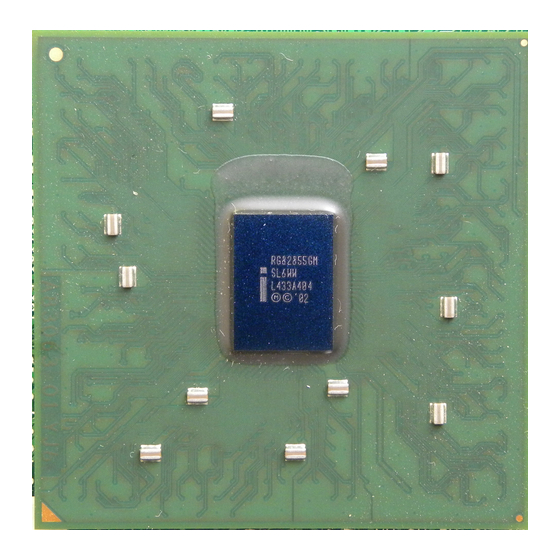
Intel 855GM Manuals
Manuals and User Guides for Intel 855GM. We have 1 Intel 855GM manual available for free PDF download: Design Manual
Intel 855GM Design Manual (362 pages)
Chipset Platform
Brand: Intel
|
Category: Computer Hardware
|
Size: 5 MB
Table of Contents
-
Introduction21
-
ITP Support65
-
ETS# Usage Model117
-
Command Topology145
-
AGP Interface177
-
AGP Clock Skew182
-
Pull-Ups184
-
AGP VDDQ and VCC186
-
AGP Compensation186
-
Hub Interface187
-
I/O Subsystem195
-
IDE Interface195
-
Cabling195
-
Pci200
-
AC'97 Routing204
-
Esd211
-
Fwh216
-
FWH Decoupling216
-
Rtc218
-
RTC Crystal219
-
Susclk223
-
Bus Topologies226
-
Impedances227
-
Line Termination227
-
Placement228
-
Host Clock Group241
-
EMI Constraints244
-
PCI Clock Group248
-
Definitions255
-
Voltage Supply257
-
Sequencing261
-
Gmch Gtlvref269
-
FWH Decoupling273
-
Vccp (I/O)287
-
Vcca (Pll)288
-
VCC (Core)288
-
Clock Checklist289
-
System Memory291
-
Fsb294
-
Hub Interface295
-
Lvds295
-
Dvo296
-
Dac297
-
Miscellaneous298
-
ICH4-M Checklist301
-
Gpio302
-
AC '97 Interface304
-
USB Interface306
-
Hub Interface306
-
FWH Checklist312
-
Schematics315
Advertisement
Advertisement
